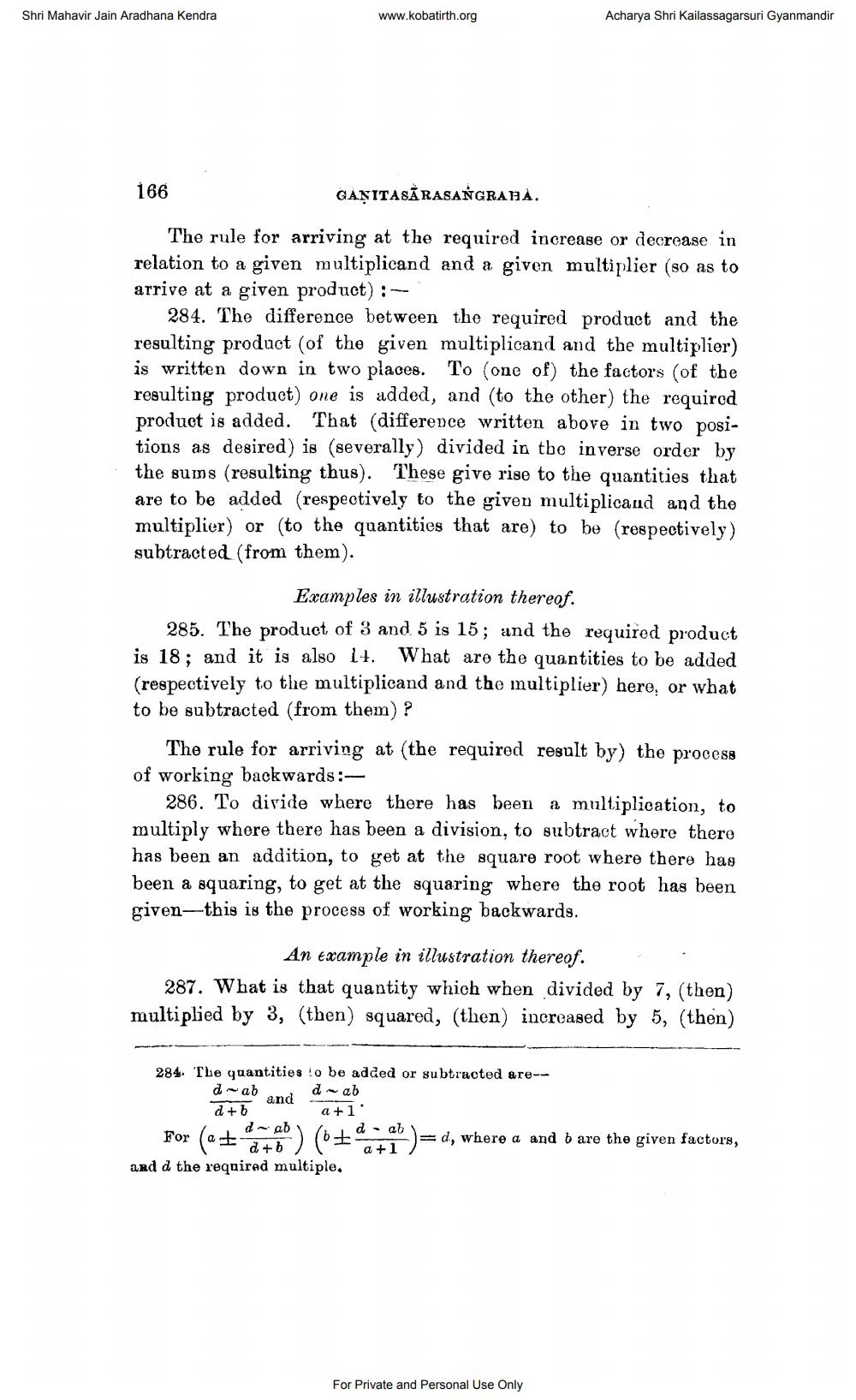________________
Shri Mahavir Jain Aradhana Kendra
www.kobatirth.org
Acharya Shri Kailassagarsuri Gyanmandir
166
GANITASĀRASANGRAHA.
The rule for arriving at the required increase or decrease in relation to a given multiplicand and a given multiplier (so as to arrive at a given product): -
284. The difference between the required product and the resulting product (of the given multiplicand and the multiplier) is written down in two places. To (one of) the factors of the resulting product) one is added, and to the other the required product is added. That (difference written above in two positions as desired) is (severally) divided in the inverse order by the sums (resulting thus). These give rise to the quantities that are to be added (respectively to the given multiplicand and the multiplier) or (to the quantities that are) to be respectively) subtracted from them).
Examples in illustration thereof. 285. The product of 3 and 5 is 15; and the required product is 18; and it is also it. What are the quantities to be added (respectively to the multiplicand and the multiplier) here, or what to be subtracted from them)?
The rule for arriving at the required result by) the process of working backwards:
286. To divide where there has been a multiplication, to multiply where there has been a division, to subtract where there has been an addition, to get at the square root where there has been a squaring, to get at the squaring where the root has been given—this is the process of working backwards.
An example in illustration thereof. 287. What is that quantity which when divided by 7, (then) multiplied by 3, (then) squared, (then) increased by 5, (then)
284. The quantities !o be added or subtracted are--
dabad-ab d+b and arī: dab
ab
=d, where a and b are the given factors, dub and d the required multiple
a +
1
For Private and Personal Use Only




